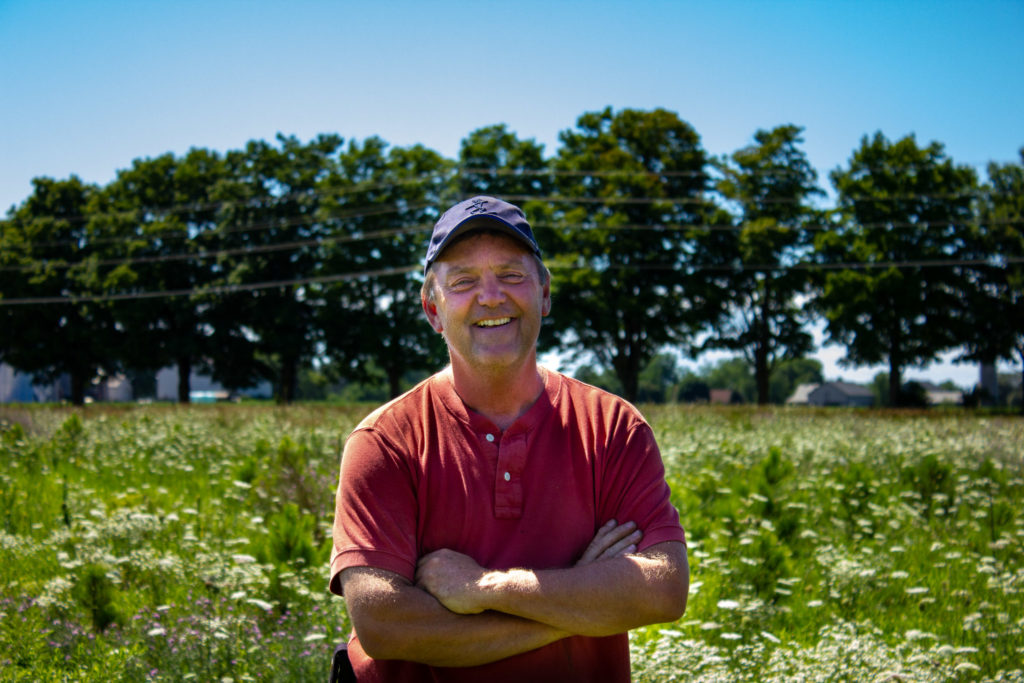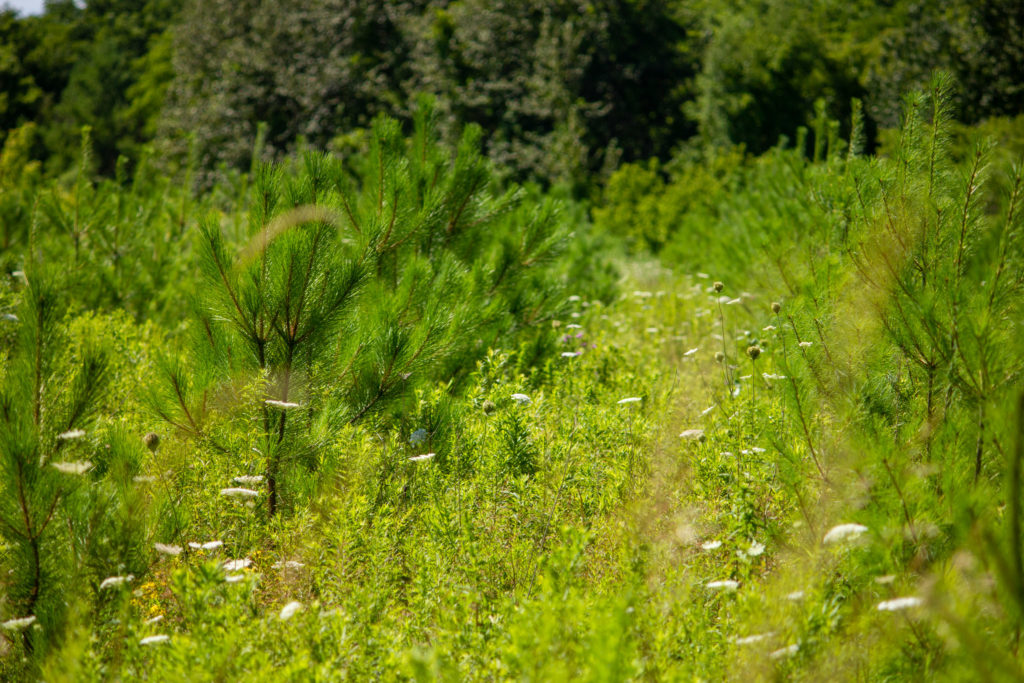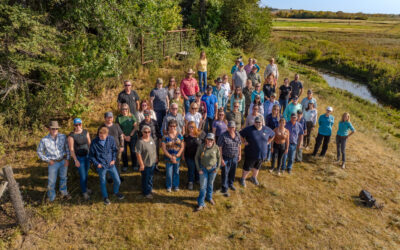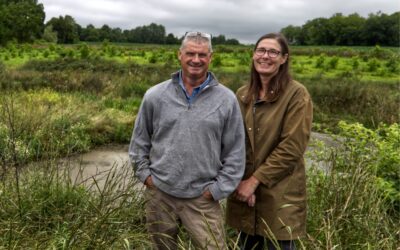Through ALUS, Jim Caley has transformed acres of less productive sandy soil into a flourishing arboreal ecosystem.

Jim Caley on his farm, Caley’s Grain, outside Port Elgin, Ontario.
Like many ALUS participants, Jim is a grain and oil seed producer. His company, Caley’s Grain, is located Southeast of Port Elgin, Ontario, where he produces corn, soybeans and wheat for market on over 3,200 acres of land.
In 1959, Jim’s father started out as a tobacco producer on the land, which was an ideal crop for the sandy soil. Changing markets pressed many tobacco farmers to transition into other crop commodities. For Caley’s Grain, they were challenged by the sandy soil, ideal for tobacco, but less well-suited to their current commodities.
“Instinctually, we knew that there were some weak areas that were sandy and that we were probably losing our inputs on it,” said Jim of the struggle to keep sandy, erosion-prone land productive. “Then, with the last ten years or so of yield maps, we recognized that there were definitely some weak areas, unproductive.”
Unproductive marginal soil is a drain on producer’s time, energy and resources. After Jim assessed the yield maps, he made his decision: “Let’s do the tree thing.”

Native conifers on one of Jim’s two ALUS projects, with a corn crop in the background.
A cautious adopter of the ALUS program, Jim said: “I did my research through the internet, and my neighbour spoke well of the program, so I got involved that way”.
So, in 2017, Jim joined the ALUS Grey-Bruce program.
“It’s been very good, actually,” he said. “We try to stay abreast of all of the programs that are available to us, and this one was so easy. An application and away we go, and it has been very beneficial. So, we’ll continue to look at this one.”
When asked how the program has helped, Jim is emphatic: “Soil erosion—Huge! Soil erosion for me is the number one thing,” said Jim. The addition of the ALUS tree-planting project to the land has been both simple and profound.
“There is no soil erosion,” said Jim. Erosion be gone; soil hangs on.

Rows of native conifers on Jim’s land among the natural undergrowth.



